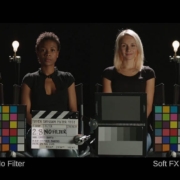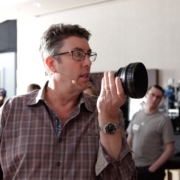Oscar Nominee Camille Friend on Black Panther: Wakanda Forever
Hair Department Head Camille Friend stops by Filmmakers Academy for the latest edition of Finding the Frame to talk about her illustrious career, work on Black Panther: Wakanda Forever, and her recent Oscar nomination for Best Achievement in Makeup and Hairstyling.
WATCH FINDING THE FRAME WITH CAMILLE FRIEND
Watch an excerpt from the interview with Camille Friend below!
To watch the full interview and learn about Camille Friend and her approach as Head Hair Stylist, become an All Access member today!
COLLABORATING WITH DIRECTORS & ACTORS
Every project is different with unique creatives and perspectives. Fortunately, on Black Panther: Wakanda Forever, Camille Friend reunited with director Ryan Coogler. They previously worked together on the original Black Panther movie and constructed the look and feel of Wakanda. So, going into the project, they expanded on what they previously created.
In the case of Coogler, he is a very hands-on director, according to Camille. She would text him and even if he didn’t get back right away, he always responded, even if it was 1 AM.
 |
 |
From the beginning, they talked about every character and where they pick back up with them after mourning the death of T’Challa (Chadwick Boseman).
“How was Marvel going to tell the story for not only for the fans, but also for us as the crew because we’d lost our King, too…. [Coogler] talked about how Wakanda Forever was the mother’s story — was the women’s story.”
Everything was interconnected. For example, Shuri (Letitia Wright) and Ramonda (Angela Bassett) shave their heads in mourning, leaning into the culture of West Africa, so a year later Camille considered what their hair would look like. So not only did she ensure that her actors looked absolutely brilliant, but she also made sure they fit into the continuity of the narrative.
RULES OF ENGAGEMENT
In addition to the Wakandans, Camille also designed a Mesoamerican look for the Talokanil. Influenced by ancient Mayan ancestry, she wanted to do the right thing. This approach was highlighted in her discussions with her veteran barber, Victor Paz.
When Coogler would provide notes about something not working, Camille would devise a way to not only make it work better, but also more efficiently. For instance, the clay wigs that the mining tribe wears once took a month to create just one. But she and her team cracked the code and was able to crank out wigs every two to three days.
In the first Black Panther, they had a low supply of what she calls “natural textured hair;” i.e. a 3ABC or 4ABC — curly hair, coiled hair, kinky hair, etc. So, they had to carefully work with the supply they had. But due to what Camille coins as the “Black Panther Effect,” by the time of the sequel, these types of hair were much easier to acquire in the marketplace.
HAIRSTYLE RESEARCH AND DEVELOPMENT
Throughout the movie, there were plenty of wet scenes. Especially with the Talokanil that they shot in tanks of water. They had a professor of Mayan culture who advised Camille on the different types of Mayan hairstyles.
“This hairstyle would maybe be on a woman who wasn’t married,” recollects Camille, “this would be on a person who is married. Or, this would be on a person of this social status. Working through all those different layers of what the hair would look like in that culture, it’s a culture that is gone. So, it’s not something like you can just even go to Google and find things.”
It took Camille and her team a lot of work to research and bring about that authenticity. Then, they had to see what it looked like with the wardrobe and then with makeup and blue skin tones. She also had to consider how the hair would look underwater.
READ MORE: Underwater cinematography in the Look of Avatar: The Way of Water and wardrobe with Deborah L. Scott.
WORKING WITH HAIR UNDERWATER
Camille has a whole new respect for water. “It’s living and it’s breathing,” says Camille, “and how are we going to make the hair look beautiful underwater?” So, they did a lot of tests and worked closely with visual effects.
If the hair is too loose, the hair flies across the face. They had to develop unique methods to contain the hair and keep it in place. In the end, it was a matter of trial and error.
One day, Jake Garber, a friend of Camille’s told her a trick that had to do with mixing alcohol and glue. They thinned it out and used it like hair spray.
First, they tested it on a wig and were pleased when it didn’t turn white. Unlike regular hairspray that clouded the water, the glue hairspray was the ideal solution to the problem.
Even when working on a show that had scenes in the ocean, a mentor advised Camille to try medical adhesive silicone glue and different mixtures of glue to ensure that the hair stayed on underwater.
WATCH THE FULL INTERVIEW
This is only an excerpt from our interview with Camille Friend. To watch the full interview and learn more about Camille’s experience, become an All Access member today!
As an All Access member, you get full access to all other Finding the Frame interviews as well as every course and lesson instructed by industry professionals. On top of that, you gain entrance into our exclusive community and can use the FA app to enhance your skills while on the job!
Join Filmmakers Academy All Access to watch the full interview!









